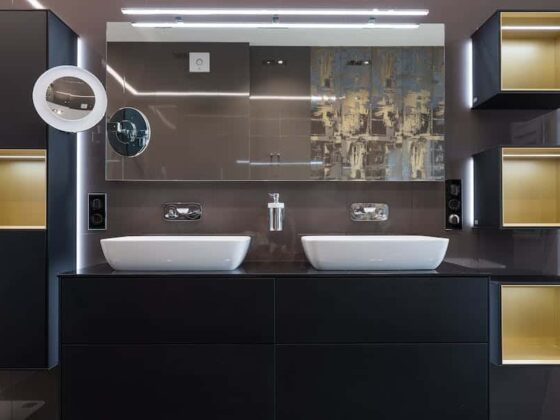The term “low pile carpet” refers to a specific type of carpeting that has gained popularity for its practicality and versatility. With its shorter pile height and unique characteristics, low pile carpeting offers a range of advantages and applications in both residential and commercial spaces. Understanding what low pile carpet is and its distinct features is essential for anyone considering flooring options or looking to redecorate. In this article, we will explore the definition, characteristics, advantages, disadvantages, and various applications of low-pile carpets. Additionally, we will delve into maintenance tips, cost considerations, and environmental aspects to help you make informed decisions when it comes to selecting the right carpet for your needs.
What Is Low Pile Carpet?
Low pile carpet is a type of carpeting with a shorter pile height compared to traditional carpets. It is characterized by its tight, densely woven fibers, resulting in a flatter and smoother surface. Low-pile carpets offer durability, ease of maintenance, and resistance to wear and tear. They are commonly used in high-traffic areas, commercial spaces, and homes where practicality and style are important considerations.
Characteristics Of Low Pile Carpet
Low pile carpet possesses several distinctive characteristics that set it apart from other types of carpeting:
Shorter Pile Height: One of the primary characteristics of low pile carpet is its short pile height, typically measuring around 1/4 inch or less. This shorter pile creates a sleek and smooth surface, making it easier to clean and maintain.
High Density: Low pile carpets have a higher density of fibers per square inch. This density contributes to their durability and resilience, as the tightly packed fibers can withstand heavy foot traffic without matting down or showing signs of wear quickly.
Fiber Types: They are typically constructed using various fiber types, including nylon, polyester, or olefin. These fibers are chosen for their strength and resistance to stains, ensuring the carpet’s longevity.
Appearance: Low pile carpets come in a wide range of colors and patterns, allowing for versatility in design and decor. They often have a more modern and minimalist appearance, suitable for contemporary interiors.
Advantages Of Low Pile Carpet
Low pile carpet offers numerous advantages that make it a popular choice for various settings:
- Ease Of Cleaning And Maintenance: Low pile carpets are relatively easy to clean and maintain. Their shorter fibers collect less dirt and debris, and vacuuming or spot cleaning is more efficient compared to high pile carpets.
- Resistance To Stains And Wear: The tightly woven fibers and often synthetic materials make low pile carpets highly resistant to stains, spills, and general wear and tear. This makes them an excellent choice for high-traffic areas.
- Suitable For High-Traffic Areas: Due to their durability, low pile carpets are well-suited for areas with heavy foot traffic, such as hallways, entryways, and commercial spaces. They can withstand the rigors of daily use without showing signs of damage.
- Allergy-Friendly Properties: Low pile carpets are generally less likely to trap allergens like dust mites and pet dander compared to high pile carpets. This feature can contribute to improved indoor air quality, making them a better choice for allergy sufferers.
- Compatibility With Furniture And Decor: The smooth and flat surface of low pile carpets complements various styles of furniture and interior decor. They provide a versatile backdrop for a wide range of design aesthetics. Overall, the advantages of low pile carpet make it an attractive flooring option for those seeking a combination of durability, easy maintenance, and aesthetic appeal.
Disadvantages Of Low Pile Carpet
While low pile carpet offers many advantages, it also has some disadvantages to consider:
- Limited Cushioning And Comfort: Low pile carpets provide less underfoot cushioning and comfort compared to high pile or plush carpets. They may not be the best choice for areas where comfort is a primary concern, such as bedrooms.
- Less Insulation And Soundproofing: Low pile carpets offer less thermal insulation and soundproofing compared to thicker carpets. They may not provide the same level of warmth in colder climates or noise reduction in multi-story buildings.
- May Not Hide Dirt As Well: The shorter fibers of low pile carpet may not hide dirt and stains as effectively as high pile carpets. This can lead to a need for more frequent cleaning and maintenance to keep the carpet looking its best.
- Style Limitations: Low pile carpets may not offer the same level of visual luxury and warmth as high pile options. They are often chosen for their practicality rather than their luxurious appearance.
- Potential For Fading Over Time: If exposed to direct sunlight for extended periods, low pile carpets may fade or lose their color faster than some other types of carpets. UV protection measures may be necessary in such cases.
Common Applications Of Low Pile Carpet
Low pile carpet finds versatile applications in both residential and commercial settings due to its practical and durable nature. Common applications include:
1. Residential Spaces:
Living Rooms: Low-pile carpets are popular choices for living rooms due to their durability and ease of cleaning. They provide a sleek and modern appearance.
Bedrooms: In bedrooms, low pile carpets can offer a soft and comfortable surface to step on when getting out of bed.
Home Offices: They are suitable for home offices, providing a practical flooring option that can withstand the movement of office chairs and high foot traffic.
2. Commercial Spaces:
Offices: Low pile carpets are often used in office spaces where durability, ease of maintenance, and a professional appearance are essential.
Retail Stores: Retail environments benefit from low pile carpets as they can withstand heavy foot traffic and shopping cart movement.
Hotels: Many hotel lobbies and hallways feature low pile carpets for their durability and resistance to wear.
Healthcare Facilities: Low pile carpets are chosen in healthcare settings like hospitals and clinics due to their ease of cleaning, resistance to stains, and suitability for high-traffic areas.
Educational Institutions: Schools and universities may use low pile carpets in classrooms, libraries, and common areas for their durability and ease of maintenance.
Public Spaces: Low pile carpets are found in various public spaces such as airports, convention centers, and theaters, where they can withstand heavy use and provide a clean and professional look.
Maintenance And Care Tips For Low Pile Carpet
Proper maintenance and care are essential to keep your low pile carpet looking its best and prolong its lifespan. Here are some maintenance and care tips for low pile carpet:
- Regular Vacuuming: Vacuum your low pile carpet regularly, at least once a week, to remove dirt, dust, and debris. Use a vacuum cleaner with adjustable height settings to ensure that it doesn’t damage the carpet fibers.
- Immediate Spill Cleanup: Address spills and stains promptly to prevent them from setting into the carpet. Blot the affected area with a clean, white cloth or paper towels. Avoid rubbing, as it can push the stain deeper into the fibers.
- Spot Cleaning: Use a carpet stain remover or a mixture of mild detergent and water to treat stains. Always follow the manufacturer’s recommendations for cleaning solutions. Test any cleaning product in an inconspicuous area first to ensure it doesn’t discolor or damage the carpet.
- Professional Cleaning: Schedule professional carpet cleaning at least once a year or as needed, depending on the level of traffic. Professional cleaners have the equipment and expertise to deep clean and refresh your low pile carpet effectively.
- Use Mats And Rugs: Place mats or rugs at entryways to trap dirt and moisture from shoes before they reach the carpet. This reduces the amount of dirt brought into the space and extends the carpet’s cleanliness.
- Furniture Pads: Use furniture pads under the legs of heavy furniture to prevent indentations and damage to the carpet fibers when furniture is moved or rearranged.
- Avoid Direct Sunlight: Protect your low pile carpet from direct sunlight exposure, which can cause fading and discoloration over time. Use curtains or blinds to block out UV rays.
Conclusion
In conclusion, low pile carpet offers a practical and versatile flooring solution suitable for a variety of residential and commercial applications. Its durability, ease of maintenance, and resistance to stains make it a popular choice. However, it may not provide the same level of comfort or insulation as thicker carpets, and its appearance may be more minimalist. By understanding its characteristics, advantages, and maintenance requirements, individuals can make informed decisions when considering low pile carpet for their specific needs, striking a balance between functionality and aesthetics.
FAQ’s
Is Low Pile Carpet Suitable For High-Traffic Areas?
Yes, low-pile carpet is an excellent choice for high-traffic areas due to its durability and resistance to wear and tear.
Can Low Pile Carpet Be Used In Bedrooms For Comfort?
While it may not provide the same level of plushness as high pile carpets, low pile carpet can still be used in bedrooms for a comfortable surface, especially with the addition of padding.
Is Low Pile Carpet Easy To Clean?
Yes, low pile carpet is relatively easy to clean and maintain due to its shorter fibers, which trap less dirt and debris.
Does Low Pile Carpet Hide Stains Well?
Low pile carpet may not hide stains as effectively as thicker carpets, so prompt cleaning of spills is recommended.
Is Low Pile Carpet Suitable For Allergy Sufferers?
Yes, low pile carpet is a good option for allergy sufferers, as it tends to trap fewer allergens compared to high pile carpets. Regular cleaning helps maintain good indoor air quality.









